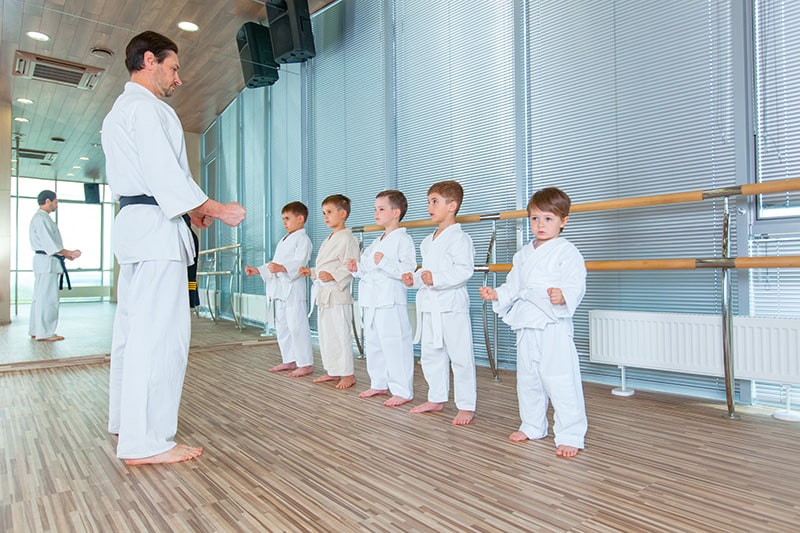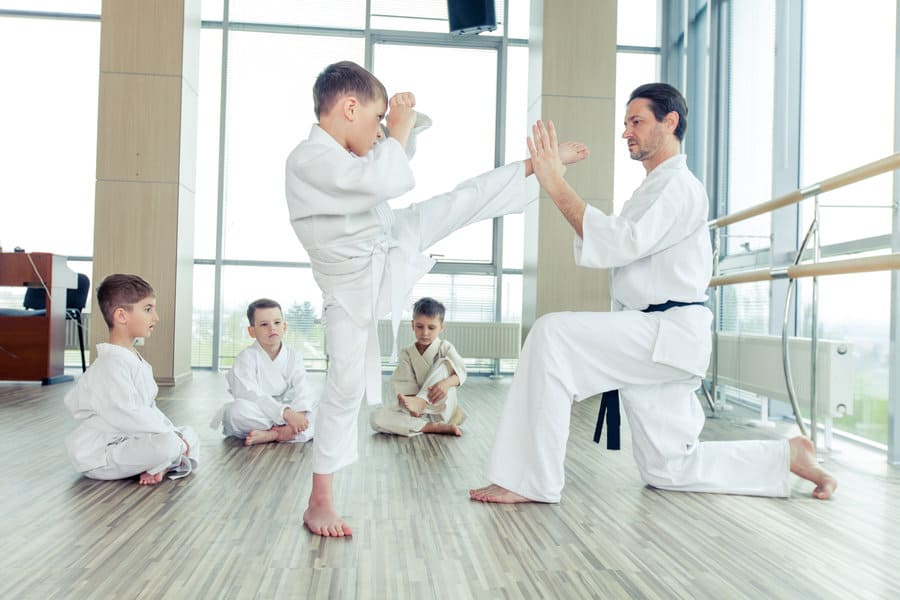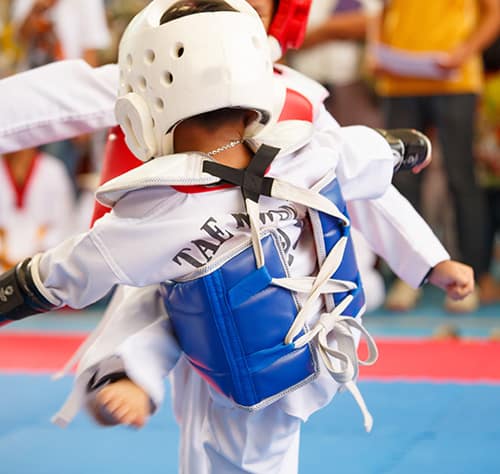
There are a lot of factors to consider when finding a taekwondo school near you. I remember that on my second round of training, I had a short list of criteria that I wanted to know such as:
- Who is the instructor?
- How close is the school to where I live or work?
- How much is it going to cost?
- What do they teach?
These were all very important questions that I was asking myself. At the time, I was taking a very informal Kung Fu class that did not have any belt progression or formal teaching. It was good exercise but I was looking not only to go back to taekwondo but also for a more structured environment with a clear progression.
Below, is a summary of what I’ll talk about further down I go into more detail on these points and share my process for choosing a taekwondo school.
| Criteria | Key Considerations | Tips |
|---|---|---|
| Instructor | Qualifications, teaching style, and personal rapport. Observe class interactions and verify credentials (e.g., Kukkiwon certification in WTF schools). | Attend a trial class; speak directly with both the instructor and the school owner. |
| Location | Proximity to your home or work and convenience for regular attendance. | Choose a school that minimizes long travel time to ensure consistent attendance. |
| Cost | Monthly fees, promotional testing fees, registration, and uniform costs. | Consider starting with a month-to-month plan before committing to long-term contracts. |
| Style | Different taekwondo styles (e.g., WTF, ATA, ITF) and how they align with your goals. | Research each style to find the one that best suits your personal interests and potential competition aspirations. |
| Class Schedule | Frequency and flexibility of class times for beginners through advanced students. | Look for schools that offer multiple sessions throughout the week. |
| Class Size | Teacher-to-student ratio which can affect personalized instruction and progress. | Smaller classes often allow for more individual feedback. |
| School Type | Independent, family-run schools versus chain schools, which might have a more corporate atmosphere. | A family-operated school may offer a more supportive environment. |
Your TaeKwondo Instructor
This should be the most important criteria when choosing a school. When you visit, watch a class in session and note how the instructor interacts with students. Pay attention to the instructor’s demeanor, listen to what they are saying, and observe how the students respond. Also, verify whether the person you see teaching is the owner or the head instructor. For instance, in a WTF school, a Kukkiwon certification adds credibility to both the teacher and the school.
Location
Since this hopefully will be a long term investment in yourself or your children, I would look for a school that is convenient from where your coming from , whether that’s work or home and look for a location that you would not mind going to at least 3 times a week.
If you choose a school that is out of the way or far from you, when you first start it may not seem like such a big deal but after going 3 times a week for an extended period of time, the chances are that you will get tired of this more and more as time goes on.
For me, if I had chosen a school that was far or difficult to get to, it would have been far to easy for me to make that as an excuse not to go and once you start down that slippery road its hard to recover.
Cost
This is where you need to be really careful as you can be making a long term commitment without realizing the potential consequences. What happened to me, and what I think happens to most people whether its for themselves or their children is after you take the class, the instructor will sit down with you to see if you have any questions and naturally, ask you if you would like to join.
He will then go over the pricing options with you and then, and here is where you need to be careful, he/she will bring out a contract for you to read over and sign. The rates that are charged may be on a scale depending on how many classes per week you plan on attending. Usually will start with a minimum of 2, which the absolute least amount of classes you should be going to per week and on up to every day.
I would highly recommend that, at least the beginning, you go month to month if at all possible. You will probably have to pay a bit more but it will be worth it if you decide after a few months down the road that the school is not for you or your children.
If you sign a one year or multi year commitment, you will have to pay a heavy fee or not be able to get out of it at all. If, after a few months, you know you are going to stick with it then you can go ahead and sign for a longer term and thus get the cheaper price.
Promotional Belt Testing
You will also need to ask about the cost of testing. This came as a bit of a surprise to me as I never thought of asking when I signed up, but each time you test its going to cost you. That’s going to vary from school but mine costs $60.00 for the lower belts and goes up as you go up the ranks. This covers the cost of the testing plus the new awarded belt.
Keep in mind that when you do finally test for your black belt its going to be very expensive, as they have to register you with Kukkiwon and its a much more involved practice. The other initial costs you probably will have to take into account is the “registration fee” as well as the price of the uniform.
Some schools will let you get your uniform online from places such as Amazon while others will require that you wear that schools uniform that will have the schools logo on it.
TaeKwonDo Styles
I did a post on the different styles of Tae Kwon Do but this is an important decision you will have to make before joining a school. I decided on the WTF as I liked the structure and I liked it being recognized by the Kukkiwon in South Korea.
I have NO aspirations of going to the Olympics or doing competitions but if this is a consideration for you or your children, you may want to consider this style. Of course, there are others styles such as the ATA and ITF and you should investigate these schools and instructors as well.
Classes and Time

Usually classes and time are broken up by skill and age level. For example, their will be beginner classes for children and beginner classes for Teens and Adults. Look for class schedules that not only work for you at the start but also as you advance and move up to the intermediate and advanced that those times work for you as well.
I would also suggest that you try to find a school that has classes 6 days per week and offer at least 1 per day for you. In this way, if something happens or comes up one day you can always go the next. If their only classes for you a few times per week than it makes it more difficult to work around any scheduling issue that may come up.
Typical Curriculum for Students
While TaeKwonDo may vary from school to school, especially those schools which are part of different organizations, most will have similar curriculum. Typically, the organization (like Kukkiwon or WT) will define the style, but then it is up to the school to tailor their individual practices.
The first of which include forms. These are often referred as hyeong, poomsae and teu, which is Korean for forms. Forms help students develop stances, techniques, and movements in isolation. Although it is very common in most martial arts, not all taekwondo schools will practice forms.
Sparring makes up the next part of most school’s practice. Many variations may occur but common ones are freestyle sparring and point sparring. In freestyle sparring, each student continuously spars for several minutes, while competition is interrupted after each point earned during point sparring.
This practice helps students apply principles and techniques as well as get them ready for competition if they choose to do so. The fundamentals include kicks, blocks, punches, and striking. These are the primary pillars of taekwondo. Grappling, holds, throwing, and falling are usually also apart of curriculum but are secondary.
TaeKwonDo schools may also teach relaxation methods such as meditation, anaerobic and aerobic workouts, and stretching. Ultimately, students build discipline, etiquette, respect, and self-confidence. When ready, they will take examinations to move up to the next belt.
Class Size
This is very important and again, something I didn’t think about when I started. When you talk with the instructor ask him what is the Teacher to student ratio. If you have say 30 students per class and of different belt levels and only 1 instructor then you will not learn as much or get critiqued as you need to be in order to make the improvements not only for your next belt testing but also for yourself.
You may think you are doing a kick wrong and not know it unless you have an teacher there watching. For me the smaller the classes are the better.
Avoid The Chain Schools
These generally have a much more corporate feel and they tend to go through instructors quite quickly as a lot of them are new to teaching and need a place to start before moving on to opening their own school or to another opportunity.
Its sort of like buying local products as opposed to national brands, with a family owned and operated school you get much more a family type atmosphere which not only do I prefer but I think the kids do as well.

